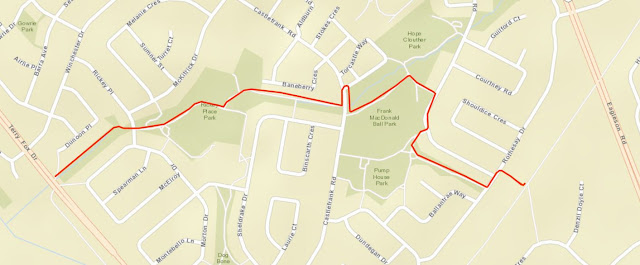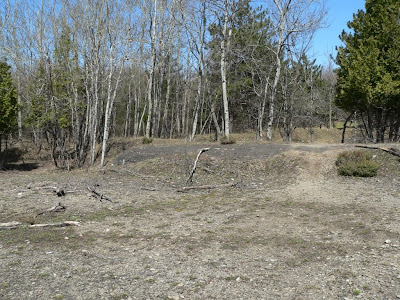The Government Wants
to Lock Me in My Room
Well this blog post is
taking somewhat of a change of direction from that planned, which was
to focus on the benefits of being a retired pensioner at this time,
since the Ontario government is telling me that I will suddenly be at
risk for COVOD-19 on my birthday in a few days and should (or must,
depending on the source) self-isolate for 14 days after which I will
be fine again (or maybe not, depending on the source).
This puts me in a
strange position as someone who has been critical of those who do not
listen to the experts and health authorities on the verge of engaging
in civil disobedience by ignoring them. I am put in a position where
they want me to change my healthy lifestyle and lock myself in a room
for two weeks (or longer) presumably because of a statistical
relationship between age and a presumed greater degree of risk
COVID-19.
From the Ontario
government website.
Self-isolating
means staying at home and avoiding contact with other people to help
prevent the spread of disease to others in your home and your
community.
All
persons over 70 years of age and individuals who are
immunocompromised are advised to self-isolate for a period of 14
days. This means that you should only leave your home or see other
people for essential reasons. Where possible, you should seek
services over the phone or internet or ask for help from friends,
family or neighbours with essential errands. (
The
2019 Novel Coronavirus (COVID-19) | Ontario.ca)
Self-assessment result
You
must self-isolate at home and monitor your health because you are
part of an at-risk group.
You are in an at-risk
group because you said one of the following applies to you:
You
must self-isolate, which means:
only
leave your home or see other people for critical reasons (like a
medical emergency)
seek
services over the phone or online or ask for help from friends,
family or neighbours
do
not go into a hospital or clinic to get a COVID-19 test
unless you are asked to by a health care provider
The first thing one
notices if one reads carefully is that the first references uses
“advised” and “for a period of 14 days” and the second
reference uses “must” and has no reference to a time period.
TORONTO
-- Ontario's Chief Medical Officer of Health (Dr. David Williams ) is
now recommending that all people over the age of 70 self-isolate
given the elevated risk of "severe outcomes" should they
contract COVID-19.
"Given
the greater risk of severe outcomes to Ontarians who are elderly, I
am also strongly recommending that individuals over 70 years of age
self-isolate,"
Williams
wrote. "This means only leaving home or seeing other people
for essential reasons. Where possible, you should seek services over
the phone or internet or ask for help from friends, family or
neighbours with essential errands."
Meanwhile people over
70 comprise only 14% of COVID-19 cases in Canada as reported in this
Ottawa Citizen article:
"New
data: Middle-aged Canadians most likely to catch COVID-19, so far".
The percentage of Canadians over 65 was 14% in 2010 and growing
(
Statistics
Canada) making it clear that the percentage of COVID-19 cases
among those over 70 today is clearly below that of the general
population. We are at less risk statistically not more risk.
But that really is not
the point. There clearly is a subset of older Canadians with health
concerns that require them to be more cautious and take more
precautions, as there are within all age groups, in particular those
that are immunocompromised and those that smoke or vape, due to the
respiratory nature of the disease.
A blanket policy based
on age discrimination does not seem to be the way to deal with health
concerns that are specific to individuals and is not going to sit
well with my comrades in this generation.
Fortunately there has
been no indication that the province will use legal instruments to
enforce this which is probably a good thing because we are a
generation that grew up with civil disobedience.
COVID-19
and Poverty/Inequality
At the same time
another important factor of this pandemic is one that has almost
entirely been ignored by the establishment press, or mainstream media
as it is sometimes called, and that is economic status.
When it comes to
underlying health factors that make individuals more susceptible to
the virus and less able to combat it economic status is a big
determinant. It determines the quality of nutrition, as well as
housing conditions (overcrowding, etc.) and other lifestyle factors,
as well as the quality of health care one has access to. This is not
just on an individual basis but also on a societal one with poorer
countries in a much more difficult position to fight off the
pandemic. Yet we see very little written about that in the media.
As we see with the
rapid response to COVID-19, compared with the feeble response to
climate change, governments are much better at reacting to acute
crisis than to chronic problems. We see this as governments quickly
jump in to deal with symptoms of climate change like flooding or
hurricanes while their response to the real problem is feeble.
COVID-19 has brought
with it not just a health crisis but an economic one, one that has
affected the group governments claim to care most about, the middle
class. Governments are scrambling to deal with the loss of jobs and
income while also trying to deal with a major health crisis.
Postscript: The
Great Outdoors is Closed
And apparently now the
outdoors is closed in Ontario.
In
a news release on Monday night, Ford announced a new emergency order
under the Emergency Management and Civil Protection Act. The order
closes all outdoor recreational amenities, such as sports fields and
playgrounds, effective immediately.
He
said the extension of the declared emergency and the new emergency
order are based on the advice of Dr. David Williams, Ontario's chief
medical officer of health.
According
to the news release, the new order closes all communal or shared,
public or private, outdoor recreational amenities in Ontario. These
include playgrounds, sports fields, basketball and tennis courts,
off-leash dog parks, beaches, skateboard and BMX parks, picnic areas,
outdoor community gardens, park shelters, outdoor exercise equipment,
condo parks and gardens, and other outdoor recreational amenities.
Healthy lifestyles are
what will create a population most resilient to health challenges
such as COVID-19. Being out in nature and exercising contribute
greatly to this. At a time when we are encouraging, indeed requiring,
physical
distancing (previously referred to as social distancing) it seems
counterproductive to close those areas that provide the space for
people to practice physical distancing without locking themselves up
in their homes in fear.
Final Words
None of this is to say
that we should not take this seriously and listen to the health
experts when they tell us to practice physical distancing to reduce the spread of the disease.
Background
















